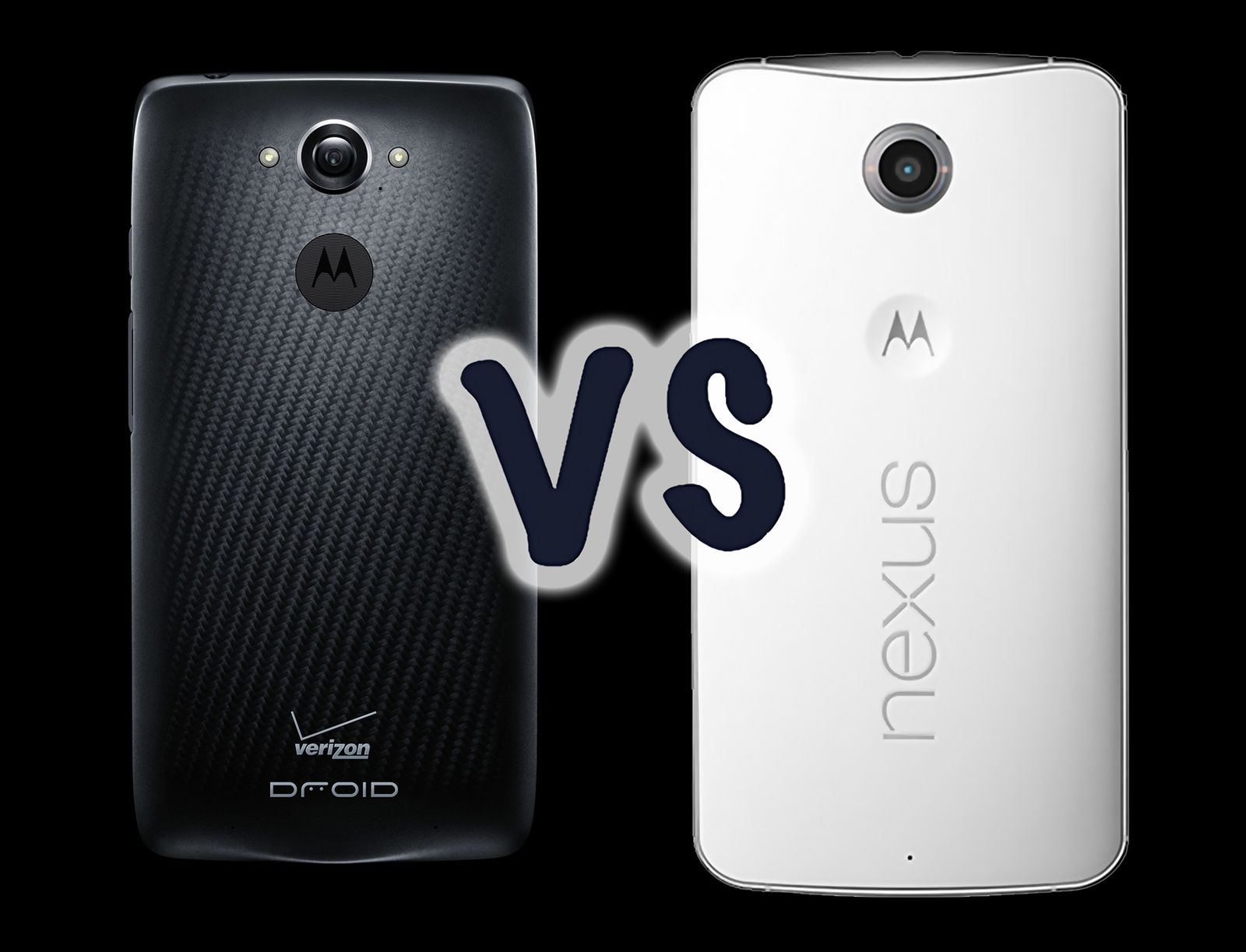The Verizon-exclusive Motorola Droid Turbo is official, and it looks like a powerhouse.
You're probably wondering how it compares to the Google Nexus 6, one of the most anticipated devices of the year (also made by Motorola). We've counted the blows, or at least the ones on paper, in an attempt to help you determine if the Droid Turbo was able to pack comparable hardware in a more compact body.
We've also tried to help you decide which device is worth your money. Check out the results below, and let us know in the comments which one you want.
READ: Verizon's powerful Droid Turbo has a 48-hour battery life
Display
Droid Turbo has a 5.2-inch AMOLED display with a 1440x2560-pixel resolution and 565 ppi, while Nexus 6 has a 6-inch AMOLD display with a 1440x2560-pixel resolution and 493 ppi. Droid Turbo therefore has the smaller-yet-crisper display, but many might view that as being better overall.
Cameras
Droid Turbo has a 20.7 rear-facing camera with a dual LED flash, F2.0 aperture size and 4K video-recording capabilities (3840x2160-pixel resolution at 24 fps). It also has a 2-megapixel front-facing camera capable of 1080p HD video recording.
Nexus 6 has a 13-megapixel rear-facing camera with a dual LED flash and F2.0 aperture. It is also capable of 4K video recording (3840x2160-pixel resolution at 30 fps). The front-facing camera is a 2-megapixel shooter.
Droid Turbo is the device you should buy if you're interested in powerful camera technology.
That said, Nexus 6 can shoot 30 fps 4K footage, whereas Droid Turbo can only do 24 fps. In that case, you need to be honest with yourself about whether you prefer more megapixels or more frames per second.
Hardware
Droid Turbo has a 2.7GHz Qualcom Snapdragon 805 system chip, with an Adreno 420 graphics processor and 3GB of RAM. It also has up to 64 GB built-in storage. Nexus 6 is exactly the same as Droid Turbo in terms of hardware, and thus this round is a tie.
Battery
Droid Turbo has a 3900mAh battery that supposedly lasts up to 48 hours, while the Nexus 6 has a 3220mAh battery that allegedly gets up to 24 hours of use.
We generally think the bigger the battery, the better the phone. But Nexus 6 does feature built-in wireless charging. Those of you who want the latest and greatest battery tech might therefore go with Nexus 6 over Droid Turbo.
Operating system
Droid Turbo will ship with Android 4.4 KitKat and will be upgraded to Android 5.0 Lollipop after the software releases. Nexus 6 is a Google device however and will of course ship with Lollipop. Android die-hards will likely want to pick up a Nexus 6 instead of waiting for Verizon's update cycle to kick in for Droid Turbo.
Size and weight
Droid Turbo weighs 176 g and has the following dimensions: 143.5 x 73.3 x 11.2 mm. As for the Nexus 6, it weighs 12g more than the Droid Turbo and has the following dimensions: 159.26 x 82.98 x 10.06 mm.
Keep in mind Nexus 6 does have a bigger display, so it would be a bigger device than Droid Turbo, but if weight and thickness are a primary concern, you should probably consider going with Droid Turbo. It's all a matter of opinion though.
Release date
Droid Turbo will launch exclusively through Verizon.com in the US on 30 October.
The 32GB version will be available in the colours Metallic Black, Metallic Red, and Ballistic Nylon for $199 on a two-year Verizon contract, while the 64GB version will available in the colour Ballistic Nylon for $249 on a two-year Verizon contract.
Nexus 6 will launch in the US on 12 November. Prices for SIM-free, unlocked versions have been set at $649 - which equals roughly £410 before tax and VAT.
Conclusion
Looking at the spec sheets alone, as Pocket-lint has obviously not yet had the chance to review both devices, it appears Droid Turbo is the more powerful smartphone out of the two. It has a crisp display, better battery, more camera megapixels, and even a thinner, lighter body.
Nexus 6 still stands out however in that it will launch with Android 5.0 Lollipop, the latest version of the Android mobile OS from Google. But, at least in this instance, we'd recommend tech over software. The Droid Turbo is expected to get Lollipop eventually, after all.

